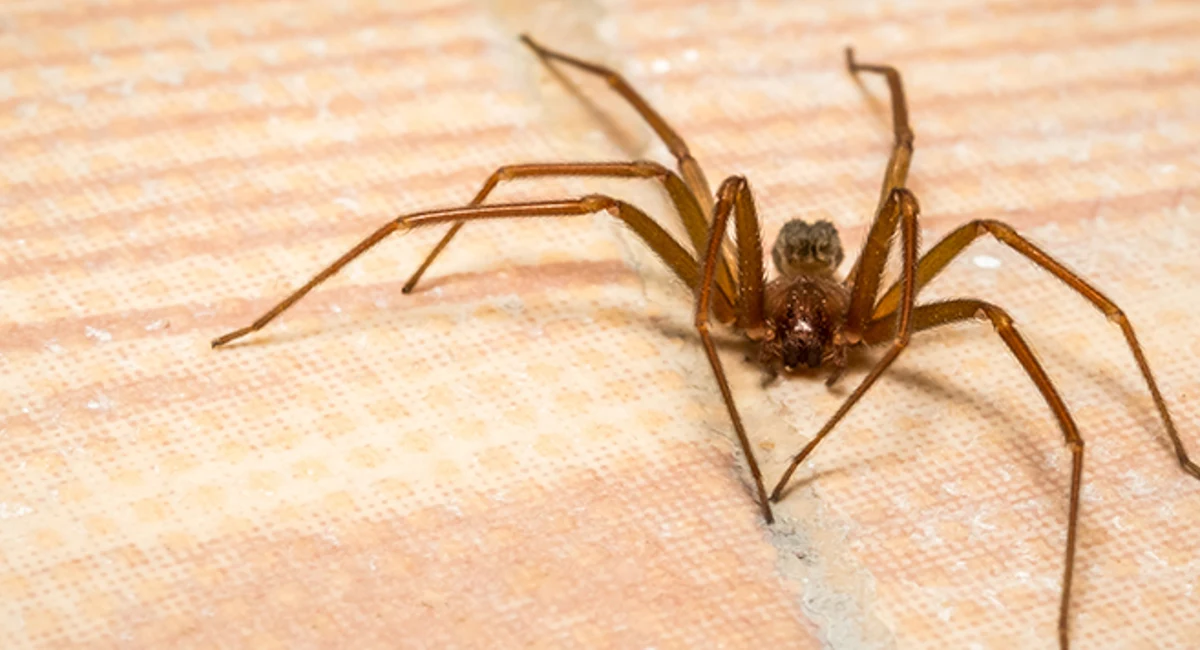The phrase “brown recluse” often sparks fear among homeowners — and for good reason. Known for their venomous bites, these spiders have a reputation that can cause panic whenever someone spots a brown spider indoors. But if you live in the Pacific Northwest, you might be wondering whether you need to worry about the brown recluse in Washington State at all.
In this detailed guide, we’ll separate fact from fiction, explain how to identify a brown recluse spider, discuss where they actually live, and provide safety tips to help you keep your home pest-free.
Are There Brown Recluse Spiders in Washington State?
Let’s start with the most important question: Are brown recluse spiders native to Washington State?
The short answer is no — the brown recluse (Loxosceles reclusa) is not native to Washington State. These spiders are primarily found in the Midwestern and Southern United States, particularly in states like Kansas, Oklahoma, Missouri, and parts of Texas.
However, occasional reports of sightings in Washington do surface, often when brown recluse spiders hitchhike inside moving boxes, furniture, or shipments from other states. Still, verified cases remain extremely rare.
So while the brown recluse in Washington State is a concern occasionally discussed, most “sightings” turn out to be cases of mistaken identity involving other local brown spiders.
Common Look-Alikes in Washington State
Because the brown recluse is uncommon in Washington, most spiders mistaken for it belong to harmless local species.
Some of the most common look-alikes include:
- Hobo spider (Eratigena agrestis): Once thought to be dangerous, now considered mostly harmless.
- Giant house spider (Eratigena atrica): Large, fast-moving spider often found indoors.
- Cellar spider (Pholcus phalangioides): Long-legged and delicate, sometimes called a “daddy longlegs.”
- Orb weavers and wolf spiders: Common outdoor spiders with brown or tan coloring.
These spiders may look intimidating, but they are essential for natural pest control and rarely bite humans.
How to Identify a Brown Recluse Spider
Even though the brown recluse in Washington State is rare, it’s still helpful to know how to identify one correctly — especially if you’ve recently received shipments or furniture from other regions.
Key characteristics of a brown recluse spider:
- Color: Uniform light to medium brown, with no stripes or bands.
- Marking: A dark violin-shaped marking on its back (the “fiddle” spider nickname comes from this).
- Eyes: Six eyes arranged in pairs (most spiders have eight).
- Size: About ¼ to ½ inch long, with legs extending to about an inch.
- Behavior: Prefers dark, dry, undisturbed areas like basements, attics, or closets.
If you suspect you’ve found one, capture it safely in a container (if possible) and contact local pest control or your county extension office for identification.
Habitat and Behavior of Brown Recluse Spiders
Brown recluse spiders are reclusive by nature — they don’t seek out people and typically bite only when disturbed. In their native regions, they are often found in garages, sheds, woodpiles, and storage boxes.
If a brown recluse somehow made its way to Washington State, it would likely remain hidden and isolated, as the climate here is less ideal for them. Washington’s cooler, wetter environment doesn’t suit their preference for warm, dry conditions.
That’s why verified populations have not been able to establish themselves in the state.
Understanding the Bite and Its Effects
Brown recluse bites have a notorious reputation. However, actual brown recluse bites in Washington State are exceedingly rare, and many supposed cases are misdiagnosed skin infections or other insect bites.
If a bite does occur, symptoms may include:
- Mild pain or stinging at the bite site
- Redness and swelling
- In rare cases, tissue necrosis (skin breakdown) at the bite area
Most bites heal on their own, but if severe symptoms develop, such as fever, rash, or expanding wounds, seek medical care immediately.
Doctors may treat suspected recluse bites with cleaning, antibiotics, or wound care — but again, verified recluse bites in Washington are almost unheard of.
Myths About Brown Recluse Spiders in Washington
The brown recluse Washington State conversation is full of myths.
Here are a few of the most common misconceptions:
- Myth #1: “Brown recluses are common in Washington homes.”
Fact: False. No established populations exist in the Pacific Northwest. - Myth #2: “Every brown spider is a brown recluse.”
Fact: Many harmless species share similar colors but lack the distinctive violin mark and six-eye pattern. - Myth #3: “A brown recluse bite always causes severe tissue damage.”
Fact: Most bites are mild, and only a small percentage cause necrosis.
Understanding these facts helps reduce unnecessary fear and promotes realistic pest management.
Safety and Prevention Tips for Homeowners
Even though the brown recluse in Washington State is rare, it’s wise to take preventive steps that keep all spiders out of your home.
Here’s how to maintain a spider-safe environment:
- Seal cracks and gaps around doors, windows, and foundations.
- Declutter storage areas where spiders like to hide.
- Shake out clothing or shoes that have been sitting unused.
- Use sticky traps in basements or garages to monitor spider activity.
- Vacuum regularly in corners and under furniture.
If you receive shipments or move boxes from out of state, inspect them carefully before bringing them indoors — this is the most likely way a brown recluse could accidentally end up in Washington.
What to Do If You Think You Found a Brown Recluse
If you believe you’ve encountered a brown recluse in Washington State, stay calm and take the following steps:
- Do not handle it directly. Use a glass jar or clear container to trap it safely.
- Take a clear photo for identification.
- Contact local experts such as Washington State University Extension, the Burke Museum, or a licensed pest control company.
- Do not assume danger. Many harmless spiders get misidentified as brown recluses.
These steps will help you confirm the spider’s identity without putting yourself at risk.
The Role of Pest Control Experts
If you’re concerned about spiders in your home, professional pest control can provide peace of mind. In Washington State, pest technicians can inspect your home, identify any spider species, and apply safe, targeted treatments.
Experts also focus on prevention — sealing entry points and reducing conditions that attract pests. While it’s highly unlikely that a brown recluse infestation exists in Washington, a pest control professional can ensure your home remains spider-free year-round.
Living Safely and Informed in Washington
For Washington residents, the fear of the brown recluse is largely unfounded — but staying informed is always smart. The Pacific Northwest has its share of spiders, but few pose any real danger to humans.
By learning how to distinguish between the brown recluse and local harmless species, you can stay calm and handle encounters confidently. Remember that spiders play an important ecological role, keeping insect populations in check.
Conclusion
The brown recluse Washington State story is one that often mixes fact with fear. The truth is that the brown recluse spider is not native to Washington, and sightings are extremely rare. Most supposed encounters are cases of mistaken identity involving harmless local species.
Still, understanding what the brown recluse looks like and knowing how to prevent spider infestations are valuable steps for every homeowner. By staying informed, cautious, and calm, you can ensure your home remains safe — without letting myths cause unnecessary worry.
If you ever suspect you’ve seen a brown recluse, remember to contact a professional for confirmation before jumping to conclusions. In nearly all cases, you’ll find that the culprit is a harmless spider just doing its job.
FAQs
1. Are brown recluse spiders found in Washington State?
No, the brown recluse in Washington State is extremely rare. Verified populations do not exist, though occasional individuals may be transported accidentally from other regions.
2. What spiders are often mistaken for brown recluses in Washington?
Hobo spiders, giant house spiders, and cellar spiders are the most common look-alikes. These species are harmless and widespread in the Pacific Northwest.
3. What should I do if I get bitten by a spider in Washington?
Clean the wound, apply ice, and monitor for symptoms. Most spider bites are mild. If symptoms worsen, seek medical attention — but true brown recluse bites are almost unheard of in this region.
4. Can a brown recluse survive in Washington’s climate?
It’s unlikely. Brown recluses prefer warm, dry environments. Washington’s cooler, wetter conditions make it difficult for them to establish a population.
5. How can I prevent spiders in my home?
Keep storage areas tidy, seal cracks, remove clutter, and vacuum regularly. Inspect boxes and items brought from out of state to reduce the chance of importing spiders.
Also read: What Is an Air Conditioner Vest and How Does It Work? | Complete Guide




Leave a Comment